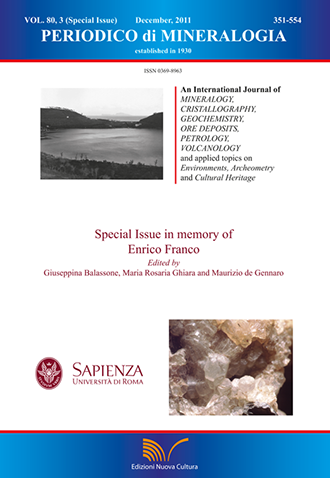Mineral compositions and magmatic evolution of the calcalkaline rocks of northwestern Sardinia, Italy
DOI:
https://doi.org/10.2451/2011PM0033Keywords:
ignimbrites, mineral chemistry, orogenic magmatism, SardiniaAbstract
During Early Miocene northwestern Sardinia was interested by widespread volcanic activity belonging to the calcalkaline to high-K calcalkaline “orogenic” Sardinian cycle. The peak of activity is recorded in the ~ 22-18 Ma time span and it is mostly concentrated along the Fossa Sarda graben, an Oligo-Miocene rift system cutting the western Sardinia from north to south. The northwestern Sardinia volcanic rocks crop out in the districts of Bosa-Alghero, Anglona, Logudoro, Mulargia-Macomer and Ottana graben, ranging in composition from rare high alumina basalt lavas to rhyolitic ignimbrites (welded and unwelded) and lava flows, through basaltic andesites, andesites and dacitic domes, with the most evolved rocks (dacites and rhyolites) being volumetrically predominant. Here we report the chemical composition of the main rock-forming minerals (clinopyroxene, orthopyroxene, plagioclase, sanidine, magnetite, ilmenite, olivine, brown mica and amphibole) and whole-rock data covering the entire spectrum of occurring lithotypes. The bulk-rock major and trace element variations are consistent with an evolution mainly driven by fractional crystallization of the observed mineral phases. This was confirmed by mass balance calculations and MELTS-based modelling, which allowed reconstructing liquid lines of descent for each district. Crystallization conditions took place at low pressures (1 kbar) and low H2 O contents (< 2 wt.%), with oxygen fugacities close to the QFM and Ni- NiO synthetic buffers and temperature values ranging from ~ 900 to ~ 1150 °C for mafic rocks and from ~ 800 to ~ 1000 °C for the silicic ones. Open-system processes may also have had a role in the petrogenesis of the silicic rocks.


